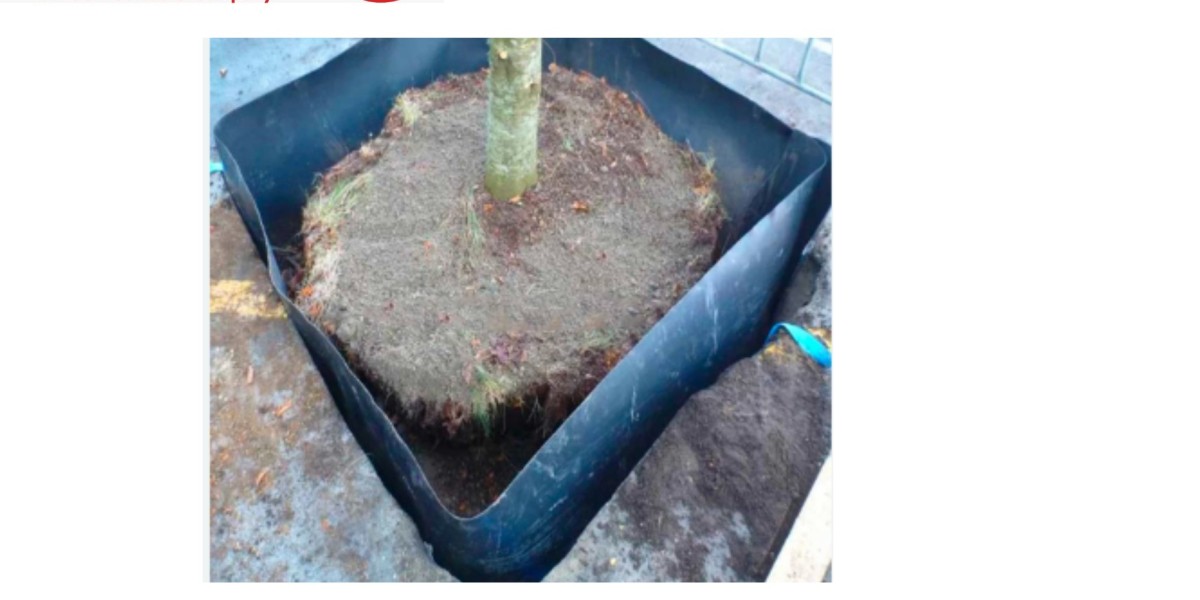Root intrusion is a common issue in urban and residential landscapes, often causing damage to foundations, pavements, and underground utilities. Without proper management, tree roots can disrupt hardscapes, compromise drainage systems, and affect the integrity of buildings. One of the most effective solutions for mitigating root invasion is the use of high-density polyethylene (HDPE) root barriers. These barriers create an impermeable boundary that guides the growth of roots away from sensitive areas, protecting both infrastructure and landscape features. In this article, we will explore the importance of HDPE root barriers, the process of installation, the role of HDPE root barrier suppliers, and how pricing factors into decision-making for landscape projects.
Understanding HDPE Root Barriers
An HDPE root barrier is a strong, flexible membrane made from high-density polyethylene, designed to block the roots of trees and other large plants from growing into unwanted areas. By creating a physical barrier underground, HDPE root barriers redirect root growth downward or away from buildings, sidewalks, driveways, and utilities. This not only prevents costly damage to structures but also ensures that trees and plants can grow healthily without compromising surrounding infrastructure.
HDPE root barriers are ideal for both residential and commercial landscaping projects, offering long-term protection with minimal maintenance. The material’s durability makes it resistant to punctures and tears, ensuring that the barrier remains effective even in challenging environments. HDPE’s impermeable nature also helps in controlling moisture levels, preventing root rot and waterlogging in certain conditions.
The Importance of HDPE Root Barrier Installation
Proper HDPE root barrier installation is crucial to its effectiveness. The installation process involves placing the barrier vertically into the soil around the root zone of trees or plants that are near infrastructure. The depth of installation depends on the type of tree and the expected size of its root system. Typically, barriers are installed to a depth of at least 24 to 36 inches to ensure that roots do not grow beneath the barrier and damage the protected area.
During the installation process, it is important to ensure that the barrier is placed tightly and without gaps, as any small opening can allow roots to bypass the barrier. This is why professional installation is often recommended for large or complex projects. Experts ensure that the barrier is installed correctly, taking into account soil conditions, root growth patterns, and the specific needs of the project.
HDPE root barrier installation can be installed during new construction projects or retrofitted in existing landscapes where root problems have already been identified. In either case, proper installation is key to achieving long-term protection against root intrusion. By guiding roots downward, the barrier helps prevent surface-level damage while allowing trees and plants to thrive without negatively impacting nearby structures.
Choosing an HDPE Root Barrier Supplier
When sourcing HDPE root barriers, it is important to select a reputable HDPE root barrier supplier that offers high-quality products and reliable service. A good supplier should provide a range of barrier sizes and thicknesses to meet the specific needs of different landscaping projects. They should also have extensive knowledge of the product and its applications, offering guidance on the appropriate barrier type and installation techniques for various situations.
Working with an experienced supplier ensures that you are getting the best materials for your project. HDPE root barriers must be strong enough to resist the pressure of growing roots while being flexible enough to accommodate shifts in soil or terrain. A supplier with a proven track record of delivering quality products can help ensure that the root barrier performs as expected over the long term.
In addition to product quality, a good HDPE root barrier supplier should offer timely delivery and competitive pricing. Whether you are a landscaper working on a residential project or a contractor involved in large-scale urban development, having access to reliable suppliers can make a significant difference in the success of your project.
Understanding HDPE Root Barrier Price
The HDPE root barrier price can vary depending on several factors, including the thickness of the material, the size of the barrier, and the quantity required for the project. Thicker barriers are generally more expensive due to their increased durability and ability to handle larger root systems. For larger landscaping projects, purchasing barriers in bulk can often lead to cost savings, as many suppliers offer discounts for higher volume orders.
While price is an important consideration, it is crucial not to compromise on quality when selecting a root barrier. A low-cost barrier that does not meet the required specifications may fail to provide adequate protection, leading to expensive repairs in the future. Investing in a high-quality HDPE root barrier price from a reputable supplier ensures that you get long-term value for your money, as a well-installed and durable barrier can last for decades.
The installation cost is another factor that can affect the overall price of a root barrier system. Professional installation is recommended for larger projects or situations where precision is critical. Although this adds to the initial cost, it ensures that the barrier is installed correctly, maximizing its effectiveness and reducing the likelihood of future root-related problems.
Advantages of HDPE Root Barriers
One of the main benefits of using HDPE root barriers is their durability. HDPE is known for its resistance to chemical and environmental degradation, which means it can withstand harsh soil conditions, moisture, and root pressure without breaking down. This long lifespan makes HDPE root barriers a cost-effective solution for managing root intrusion over time.
Another advantage is the ease of installation. HDPE root barriers are lightweight and flexible, making them relatively easy to handle and install compared to other materials. Once installed, they require little to no maintenance, offering a low-maintenance solution for landscape protection.
In addition, HDPE root barriers are environmentally friendly. They do not release harmful chemicals into the soil or water, making them safe for use in all types of landscapes, including those near sensitive ecosystems. This eco-friendly aspect makes HDPE root barriers an attractive option for projects that prioritize sustainability.
Conclusion
In conclusion, HDPE root barriers are an essential tool for protecting infrastructure from the damaging effects of root intrusion. Whether in residential gardens, commercial developments, or urban landscapes, these barriers offer a durable and effective solution for guiding root growth away from structures while allowing plants and trees to thrive. Proper installation by experienced professionals, combined with high-quality products from a reputable HDPE root barrier supplier, ensures that these barriers provide long-lasting protection.
By investing in an HDPE root barrier, property owners and contractors can prevent costly repairs, protect valuable infrastructure, and create healthier, more sustainable landscapes. With careful planning and consideration of factors such as HDPE root barrier price, the long-term benefits far outweigh the initial costs, making HDPE root barriers a wise investment for anyone involved in landscape design or construction.
Here Are Related for HDPE root barrier price
Q1: How long do HDPE root barriers last once installed?
Ans: HDPE root barriers are highly durable and can last for several decades without needing replacement. Their resistance to environmental factors ensures long-term effectiveness in preventing root intrusion.
Q2: What factors influence the HDPE root barrier price?
Ans: The price of HDPE root barriers depends on factors such as the thickness of the material, the size of the barrier, and the quantity needed for the project. Thicker barriers are generally more expensive but offer increased durability.
Q3: Can HDPE root barriers be installed in existing landscapes?
Ans: Yes, HDPE root barriers can be retrofitted in existing landscapes where root problems are already present. Professional installation ensures that the barrier is placed correctly to provide maximum protection against future root intrusion.










